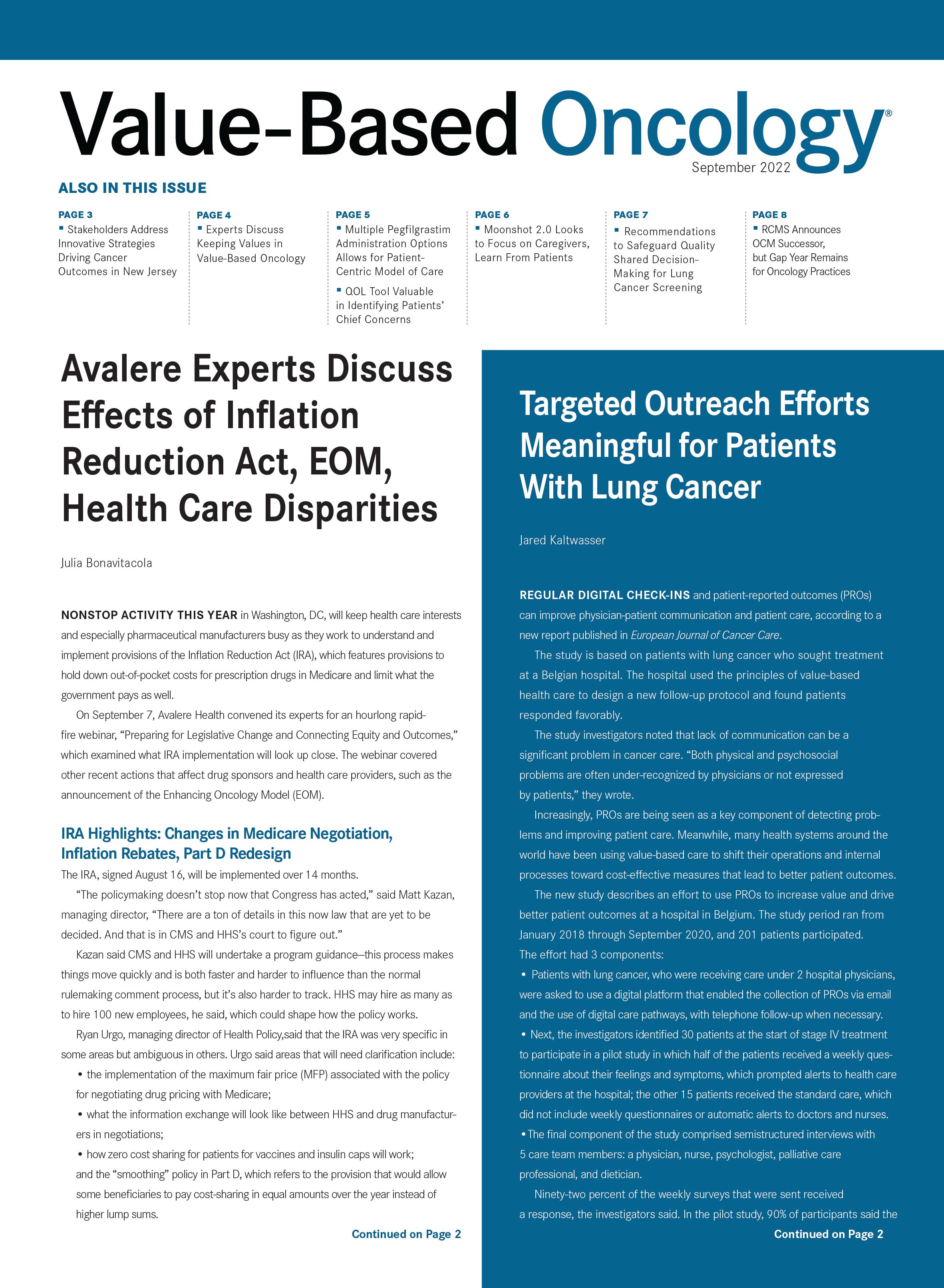Publication
Article
Value-Based Oncology®
Multiple Pegfilgrastim Administration Options Allow for Patient-Centric Model of Care
Author(s):
With 6 pegfilgrastim biosimilars approved, and multiple administration options, a patient-centric model of pegfilgrastim administration should be possible for patients with cancer who require prophylaxis of febrile neutropenia.
Patients with cancer who require granulocyte colony-stimulating factor (G-CSF) biologics to reduce the incidence of febrile neutropenia have 3 administration options available to minimize hospital or clinic visits. In addition, the use of pegfilgrastim biosimilars can minimize additional financial burdens, according to a review published in Oncology and Therapy.
There are 6 pegfilgrastim biosimilars approved by the FDA for the prophylaxis of febrile neutropenia. The first approved in June 2018 was Fulphila from Viatris/Biocon, which came to market in July 2018. The most recent pegfilgrastim biosimilar approved was Stimufend from Fresenius Kabi, which was approved September 6, 2022, and is expected to launch in early 2023.
Recent guidelines recommend next-day administration of pegfilgrastim after chemotherapy, but a growing body of evidence indicates same-day administration is possible.
“Because of the COVID-19 pandemic, the option of same-day administration is especially pertinent to minimize additional clinic visits and risks of SARS-CoV-2 exposure,” the authors explained. In their review, they discuss administration options for pegfilgrastim and its biosimilars.
Pegfilgrastim also can result in significant savings for patients and the health system. Cost savings of switching from the reference to a biosimilar in a population of 20,000 patients can top $22 million with 100% conversion, the authors noted. Those savings could provide thousands of additional doses of biosimilar pegfilgrastim or be reallocated to other treatments for cancer.
The authors identified 3 approaches to pegfilgrastim administration that can help minimize clinic visits, especially in the context of COVID-19:
- Same-day administration after chemotherapy
- Use of the FDA-approved on-body injector (OBI) to deliver pegfilgrastim approximately 27 hours after application
- Self-administration by the patient or caregiver more than 24 hours after chemotherapy
According to a decision tree they created, if a patient is comfortable coming back in for a second visit, they should receive pegfilgrastim next day. However, if they do not want to come back in, and they are comfortable with having a device attached to their skin, the OBI administration is the next preferred. If they are not comfortable with a device attached to their skin, they can either give themselves the injection the next day or have a care partner perform the injection. If the patient is not comfortable giving a self-injection and does not have anyone to provide the injection, then they will need to have a same-day administration by a health care provider.
Some of the challenges to consider when choosing the administration route include ensuring proper self-injection techniques for effective self-administration and the lack of an OBI for a pegfilgrastim biosimilar at a lower cost.
While same-day administration may be a preferred option for patients, research found that “patients receiving prophylactic pegfilgrastim on the same day as chemotherapy or 4-5 days after chemotherapy had a significantly higher incidence of febrile neutropenia compared with patients receiving pegfilgrastim on days 1-3 following chemotherapy,” the authors wrote.
Other research indicated the efficacy of same-day administration of pegfilgrastim may be dependent on the chemotherapy regimen. Considering health systems may want to minimize outpatient visits for patients with cancer, who are at an increased risk of infection, the benefits of same-day administration of pegfilgrastim outweigh the risks, the authors suggested. This has the added benefit of reducing the workload for health care workers at a time when they are overworked as a result of the pandemic.
Finally, both health systems and patients may benefit financially from increased use of pegfilgrastim biosimilars during the COVID-19 pandemic. Hospitals and health systems have seen their finances significantly impacted during the pandemic, and marginalized and vulnerable populations have also been more likely to be impacted financially during this time, the authors noted.
“Pegfilgrastim biosimilars can play a key role in minimizing the treatment-associated financial burden on patients, payers, and health care systems during the COVID-19 pandemic and beyond,” they concluded.
Reference
Humphreys SZ, Geller RB, Walden P. Pegfilgrastim biosimilars in US supportive oncology: a narrative review of administration options and economic considerations to maximize patient benefit. Oncol Ther. Published online September 16, 2022. doi:10.1007/s40487-022-00207-2






